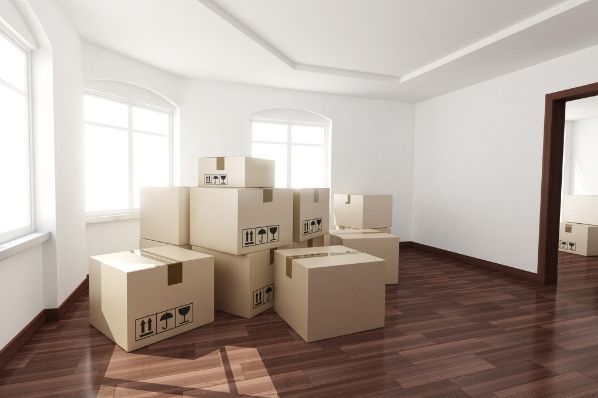Americans are stuck. Research from the Census Bureau suggests that Americans have stepped in some wet cement and have yet to extract themselves.
In 1948, more than 20 percent of Americans moved to a new home. But that percentage has been steadily declining since the 80s, to the point where now only 11 percent of Americans say they have moved in the last year.
Experts have offered all sorts of reasons for this immobility. But for some of us, anyway, there’s the unavoidable fact that moving is a pain in the behind. It’s expensive and time-consuming — and it seems to be getting worse. When I tell friends that our family is moving this week, they look at me as if I’ve just told them a family pet has died.
When my parents sold a house three decades ago, they were told to “straighten up.” But now our homes are expected to be immaculate displays. There are people who make their living “staging homes,” as if we should put on some kind of theatrical performance in order to get top dollar.
Real-estate agents will give you piles of material to explain what to do to a house to make it “show ready.” (That “show” is apparently “House Hunters.”) “Make your house look like a Pottery Barn catalogue,” one agent explained. “Only three to four books are allowed on any shelf.”
Apparently people in Pottery Barn catalogues don’t read. Also, their children don’t have Legos.
Admittedly, we do have a lot more stuff than previous generations. It’s not just that our children have more toys. The adults do as well. All those wires under the television?
And what about all those appliances on our kitchen counters? If I haven’t used the waffle maker since the last time we moved . . . Oh, forget it.
And then there are moving pains that most people, across income and demographic categories, deal with. There are legal and regulatory factors that make moving (or at least buying and selling a home) such a nuisance. It’s not enough that we New Yorkers live in one of the most expensive housing markets in the country. It’s also the cost of the home purchase or home sale.
Here’s a brief list of some of the closing costs you’ll incur around here. There are bank fees, application fees, processing fees, appraisal fees, credit-report fees, bank-attorney fees, recording fees, title-insurance fees and municipal-search fees.
Those are just for the buyer. The seller’s costs include transfer taxes, miscellaneous title fees and a pickup fee for the Title Closer as well.
According to the National Council of State Legislatures, New York has among the highest rates of transfer tax in the country and the most different kinds, too. The site adds, “There are many other local option taxes with rates varying by locality.” No kidding.
But there’s not much relief in heading for a nearby state. According to Bankrate, New Jersey and Connecticut rank in the top five states with the most expensive closing costs.
Cato Institute Senior Fellow Walter Olson says that it’s not just the taxes that make some states more expensive than others. “States regulate real-estate transfers so as to require additional stages and the involvement of certain professionals’ services, like lawyers’, at more stages.” He says New York is “particularly bad.”
Olson notes: “The title-insurance industry is also regulated in ways that make consumers pay much more in some states, independent of any difference in underwriting risk.”
And the “high-cost methods required in some states are stoutly defended by lobbies of professionals who make a living from the expensive way of doing things.”
All of which is to say that when it comes to buying and selling homes, everyone wants a piece of the action. Except the people actually moving.
Maybe we can just hang out at Pottery Barn for a while.
Naomi Schaefer Riley is a senior fellow at the Independent Women’s Forum.


